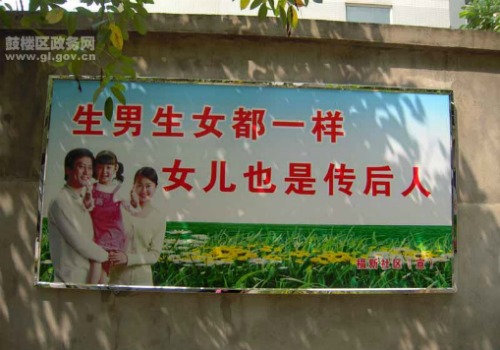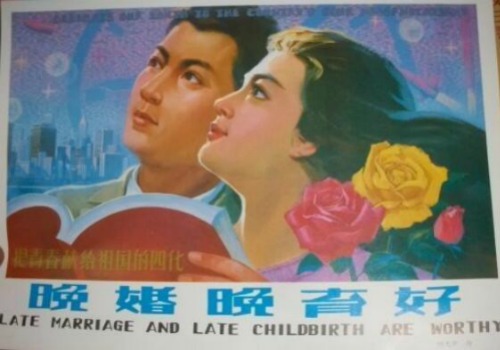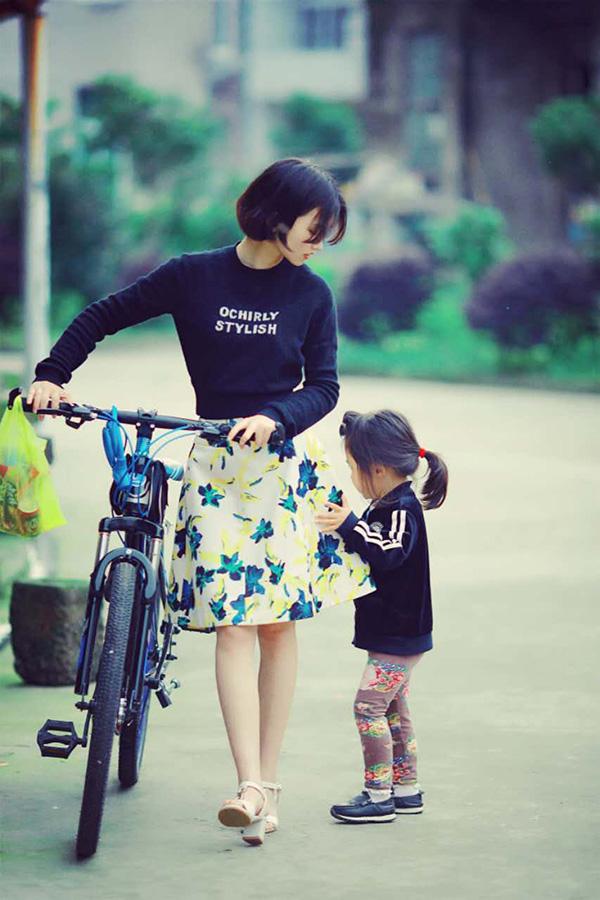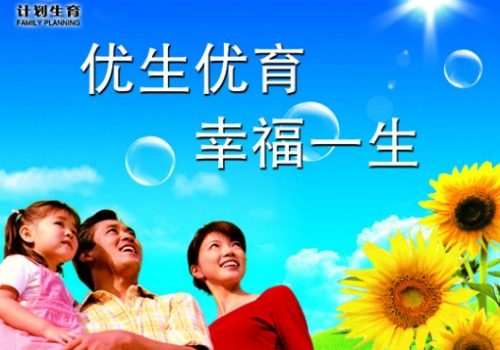When the Chinese government announced that it would be ending its One-Child Policy in the summer of 2015, 36 years after it was first implemented, the topic exploded on Weibo. Many netizens applauded the news and considered it a step forward in people’s personal freedom and individual rights.
The Two-Child Policy (二孩政策) allows all couples to have a maximum of two children. But now, over a year after it has gone into effect, there are also voices saying that the new family planning policy is actually a setback for women’s rights in China and that the One-Child Policy, as controversial as it might have been, has greatly improved the role of women in society in multiple ways.
THE TWO CHILD POLICY: A YEAR LATER
“The vigorous propagation for women to return home to have children goes against the image of the emancipated Chinese woman.”
One of the consequences of China’s One-Child Policy, designed to curb the growth of China’s population, is that Chinese society is now ageing. The latest population statistics after the introduction of the ‘Two-Child Policy’ show that 17,86 million children were born in 2016; an increase of 7.9% compared to the year before (when the One-Child Policy was still in place).
But the current population growth might not be enough to combat demographic challenges in the decades to come. Chinese state media are now encouraging couples to have more children, something that became particularly clear during this year’s CCTV Gala and a recent lengthy People’s Daily article that hinted at the legalization of surrogacy to increase the country’s birth rates.
It led to angry reactions on Chinese social media, where many women felt that they were being degraded to “breeding machines”, and that the “vigorous propagation” for women to “return home to have children” goes against the image of the emancipated Chinese woman.
ONE-CHILD POLICY: THE SIGNIFICANCE FOR WOMEN
“Slogans propagated that daughters could also carry the honor of the family line, and that girls and boys were equally important for the future of China.”
The Feminist Webforum (@女权主义贴吧) recently posted an article (link in Chinese) on Weibo titled “The One-Child Policy’s Three Major Contributions to Chinese Women’s Status,” in which it argued that the China’s One Child Policy (1979-2016) has significantly emancipated Chinese women.
The article looks back at different government’s slogans that were widely propagated during the One-Child Policy, and explains how and why they contributed to a bettered women’s status in China.
It also indicates that the recent developments around the Two Child Policy, with increasing media emphasis on reproduction, is negatively affecting the status of women in Chinese society.
The slogans “It is all the same whether you give birth to a boy or give birth to a girl” (生男生女都一样) and “Daughters also carry on the family line” (女儿也是传后人) were propagated throughout China since the 1980s up to the most remote parts of rural China.

In the patriarchal Chinese society, there is a deep-rooted preference for sons. Boys are expected to carry on the family line, become the laborers, and support the older generations (Sudbeck 2012, 44).
With the implementation of the One-Child Policy, the government strongly pushed the idea of male-female equality. Slogans propagated that daughters could also carry the honor of the family line, and that girls and boys were equally important for the future of China.

The Female Webforum article argues that this widely propagated government stance improved the status of women, as daughters came to play a more important role in the family and received more attention and a better education.
This is also reiterated by Kristine Sudbeck in the article “The Effects of China’s One-Child Policy: The Significance for Chinese Women” (2012), in which she writes that China’s One-Child Policy has indirectly benefited the role of women in society because, among others, singleton daughters received greater parental investment in terms of wealth, pride, and education (43-44).
The improved education levels for women also opened the doors to more non-traditional jobs for women, with which came a greater gender equality – not just within the family, but within the society at large.
In 2014, 64% of Chinese women were in the labor force, and the percentage of women in management positions in China is amongst the highest in the world (Catalyst 2016, CS 2014: 8).
But the Feminist Webforum writes that since the introduction of the Two-Child Policy, the calls for extended maternity leaves and for women to return home to be a good mother are growing louder every day, potentially harming the (economic) position of women in China in the long run.
Another propagated principle during the One-Child Policy was that of later marriage and later childbirth.

Although the legal age of marrying in China is 20 for women and 22 for men, late marriage (23+ for women and 25+ for men) have been specifically encouraged by Chinese authorities to benefit the state, the family, and the individual.
The propagation of late marriage and childbirth meant that women could first concentrate on their studies and career before taking on the role as wife or mother.
Since January 2016, it seems that getting married later on is no longer encouraged. At the same time the Two-Child Policy was implemented, the Chinese government canceled the ‘late wedding leave’: a 30-day paid work leave to encourage getting married after the age of 25.
The Feminist Webforum article writes that Chinese media have started to encourage women to have children while still attending college, as in this widely published article (link in Chinese) titled: “University students have children while still in school: third-year students already have 2 children, majority does not regret.”

Articles such as these falsely suggest that it might be easier to find a job when women are already married with children. But according to the Feminist Webforum, the employment rate of women without children is actually much higher than of those who have had a baby.
Getting married and having a baby after the age of 25, the article argues, is better for a woman’s mental and physical health, as well as for her future education and career. Encouraging women to start having children early on might negatively influence her future and her independence – a setback for female emancipation.
A third and final point mentioned in the article is that under the One-Child Policy the slogan “Superior Birth, Superior Childrearing” (优生优育) was propagated, in which there was an emphasis on conceiving and raising a ‘quality child.’

The article points out that with a general heightened focus on prenatal and postnatal care, thousands of women were saved from maternal death.
Before the One-Child Policy and in its early years, there was a great lack of prenatal care, and many women only relied on midwives while giving birth – if they could afford one at all. The rate of in-hospital delivery increased from 43.7% of women in 1985 up to an in-hospital delivery for rural women of 96.7% in 2011.
The Feminist Webforum points out that in the first half year since the implementation of the Two-Child Policy, there was a staggering 30% increase in maternal mortality. This increase relates to a larger proportion of elder pregnant women, causing more health problems during pregnancy and childbirth. It also has to do with health care resources being unable to deal with the rise in births, and, according to the article, is another reason why the Two Child Policy is not improving the situation of women in China.
A ROSE-COLORED PICTURE?
“Although China’s One-Child Policy is known for creating hardships, it has helped to greatly improve the position of women in China.”
Is the Feminist Webforum right? Was the One-Child Policy really so beneficial for women? Although China’s One-Child Policy is mainly known for creating hardships for women, studies have shown that it has indeed helped to greatly improve the position of women in China in terms of gender equality, parental investment, educational attainment, career, and in terms of their familial, societal and political participation (Sudbeck 2012, 55).
Although providing very valid points, the Feminist Webforum’s article is making the decades of the One-Child Policy appear somewhat more rose-colored than they were. For example; even if the rate of prenatal complications and maternal deaths greatly improved after the implementation of the One-Child Policy (and have worsened after ending it in 2016), the article does not mention that women with unapproved pregnancies received less prenatal care and had a much higher risk (2.5 x) of maternal death than with an approved pregnancy (Nayak 2008, 14).
It also does not mention female infanticide or the large number of female-selective abortions. In the 1980-2000 period alone, it is estimated that the total number of female selective abortions was around 4 million (Sudbeck 2012, 47). Nor does it mention the abandonment of children, who were mostly girls. Around the turn of the century, China had around one million almost exclusively female orphans.
The One-Child Policy also had other far-reaching consequences. Some couples moved away from mainland China to have more freedom in their reproductive rights, while others paid for expensive fertility drugs (under the policy, having twins or triplets would still count as ‘one’ legal birth).
When placed into a larger perspective, it is apparent that Chinese women have indeed made advantages towards more gender equality within China as a by-product of the One-Child Policy, but that this advancement has come at a high price.
WEIBO RESPONDS
“Our reproduction rights are taken from us, step by step.”
On Weibo, the Feminist Webforum’s article received over 50,000 views and many comments shortly after it was posted. Many commenters seemed to share similar concerns as the Feminist Webforum, and praised the One Child Policy era while expressing their concerns over the Two Child Policy.
“The Two-Child Policy is the worst news I have heard in years,” one person writes.
“Now they enthusiastically promote for us to return home and have a second baby. Will they promote us to obey our fathers, husbands and sons, and to bind our feet hereafter?”, one commenter writes.
Another female netizen says: “Since the introduction of the ‘two child policy’, male-female relations have been more out of tune, the mortality rate of pregnant women has gone up, and the discrimination on the employment market has increased dramatically. Our reproduction rights are taken from us, step by step.”
Someone else writes: “The family planning policy was not bad, it had so many benefits (..). It was not only in line with the state of society, it also gave women the right to stop giving birth [to multiple children] and to give birth safely.”
But not all netizens agree that the role of women in Chinese society today is all owed to the One-Child Policy.
“It needs to be said that there are many ways to improve women’s status,” one person writes: “and the One-Child Policy is the most inhumane one, which has caused a lot of damage to women’s health. It was never intended to improve the status of women, and is just a by-product.”
Another woman writes: “All I can think of is that one colleague of my mum who was caught with a second (unapproved) pregnancy when she had a big belly of 7-8 months. She was forced to have an abortion.”
Many netizens refer to themselves as ‘the last generation of singleton daughters.’ They suggest that with China’s new family planning policies, there will always be couples having just one son, but if they have one daughter they will try hard to have a second child that is male: “This was the last era of the only daughters – every era is that of the only sons.”
– By Manya Koetse
Follow on Twitter or Like on Facebook
What’s on Weibo is an independent blog. Want to donate? You can do so here.
References
Catalyst. 2016. “Women In The Workforce: China.” Catalyst, July 8 http://www.catalyst.org/knowledge/women-workforce-china [5.2.17].
Credit Suisse. 2014. “Women in Senior Management.” Credit Suisse, September https://publications.credit-suisse.com/tasks/render/file/index.cfm?fileid=8128F3C0-99BC-22E6-838E2A5B1E4366DF [5.2.17].
Feminist WebForum [女权主义贴吧]. 2017. “独生子女政策对中国女性地位的三大贡献 [The One-Child Policy’s Three Major Contributions to Chinese Women’s Status].” Feminist Webforum / Weibo, February 4 http://www.weibo.com/ttarticle/p/show?id=2309404071219883321876#_rnd1486322999846 [5.2.17].
Nayak, Satyam. 2008. “An Overview of China’s One Child Policy and Health Consequences on Society.” Master of Public Health, The University of Texas School of Public Health.
Sudbeck, Kristine. 2012. “The Effects of China’s One-Child Policy: The Significance for Chinese Women.” Nebraska Anthropologist: Paper 179.
Featured image: part of a slogan on a wall saying “love daughters.”.
©2017 Whatsonweibo. All rights reserved. Do not reproduce our content without permission – you can contact us at info@whatsonweibo.com
The post How the One-Child Policy Has Improved Women’s Status in China appeared first on What's on Weibo.